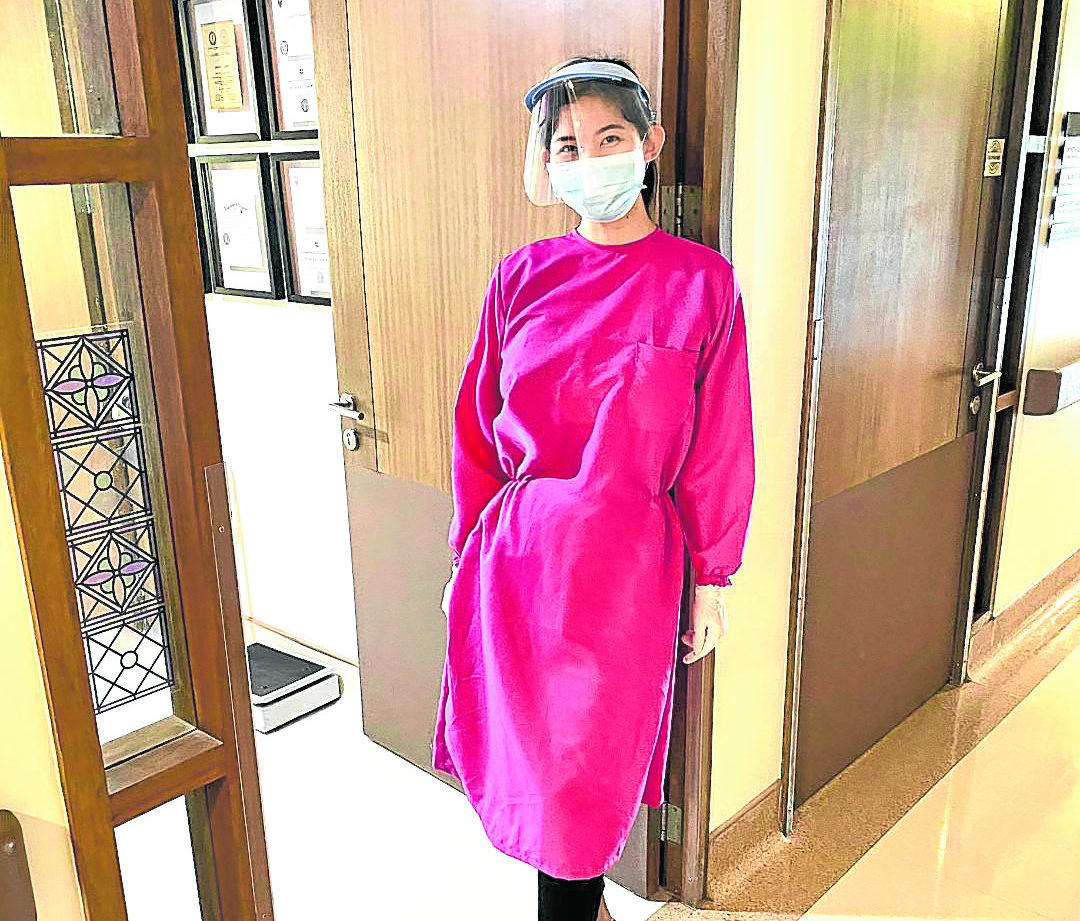
Exercise caution when buying fashionable jumpsuits and coats marketed as “PPE” (personal protective equipment).
When hospitals around the country experienced a shortage of PPE, fashion designers rallied to produce their makeshift versions, adhering to medical standards to help health front-liners combat the new coronavirus disease (COVID-19).
Now that the quarantine is being eased and some people are returning to work, they have been taking extra precaution by donning face masks, face shields and gloves.
In the fashion industry, as consumers scale back on discretionary spending, PPE has been a way for some brands to stay in business. American Apparel owner Gildan has announced PPE production as one of its long-term strategies. From makeshift PPE donated to hospitals and front-liners, many designers and brands in the local scene have shifted to PPE as a plan to move forward.
For health-care workers
But outside hospital and medical facilities, are jumpsuit and coat PPE really necessary? Do they provide protection from coronavirus?
PPE are designed to protect health-care workers, hospital/clinic staff and patients from infections, according to Dr. Geraldine Zamora, rheumatologist at St. Luke’s Bonifacio Global City, Philippine General Hospital and Manila Doctors Hospital. They include masks, respirators, goggles, face shields, hairnets or shower caps, coveralls, lab gowns or hazmat suits, and even booties. They are meant to be used once and then disposed of properly.
“People who do not work in the hospital or health-care facilities and who are not exposed to bodily fluids are not required to use waterproof coveralls or lab gowns, though some opt to do so while going about their activities outside the house,” said Zamora.
Wearing PPE entails responsibilities, said Dr. Geraldine Luna, an ear, nose, throat and neck specialist who has performed surgical procedures on COVID-19 cases.
“For surgeons like me, we wear the ‘bunny suits’ for high-risk surgical cases where the possibility of aerosolization is high (that’s contamination from a fine mist from exhalation or from talking),” Luna explained. “And there is a proper way of putting it on and removing it. In case you make a mistake with these steps, there is a chance for you to contaminate the area as well as yourself. Some health-care workers who are in the COVID wards or high-risk areas avoid going to bathrooms, since it will take some time again to don a new set of PPE. In fact, some wear diapers!”
Luna said there is no need for ordinary people to wear a PPE-like bunny suit, contrary to what we see on most social media promotions these days. But should one decide to use these, “it is important to ensure proper removal and cleaning of these reusable or washable PPE,” said Zamora.
Design, material crucial
PPE worn in medical facilities are made of nonpermeable material, such as ones made by companies like Honeywell and 3M and trademarked components like DuPont’s Tychem and Tyvek.
In some instances, designers use taffeta and nylon taffeta (material used for umbrellas) for it to be considered medical-grade. If they are not waterproof material, these so-called PPE won’t be any different from the jumpsuits and jackets hanging in your closet.
There are also a lot of details in designing PPE that can’t be overlooked. For instance, the number of seams and holes are kept to the minimum to prevent any penetration of infectious body fluids. Medical-grade suits must also be produced in a sanitized environment and must get a number of certifications.
Luna warned that design elements such as hoods, pockets, straps, among other embellishments, on pieces being sold online, could create more areas of contamination.
Zamora agreed. “Wearing one might also give a false sense of security, which may lead to lowering of guard and increasing the risk of transmission of pathogens,” she said.
If you choose to wear something that covers almost all of your exposed skin, there’s nothing wrong with that, Zamora added. But to those who find it cumbersome, especially in this sweltering heat, simply washing your exposed skin well with soap and water once you go home will do the trick.
“If you use gloves, treat them like your own skin—wash and sanitize as needed,” she said.
Email the author at frontrowedit@gmail.com.